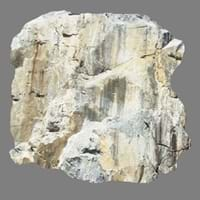Definition
Essexite which is also known as nepheline monzogabbro, is a dark gray or black holocrystalline plutonic Iigneous Rock
Trondhjemite is a leucocratic (light-colored) intrusive igneous rock. It is a variety of tonalite in which the plagioclase is mostly in the form of oligoclase. Trondhjemites are sometimes known as plagiogranites.
Discoverer
Unknown
Unknown
Etymology
From the locality in Essex County, Massachusetts,US
Not Available
Class
Igneous Rocks
Igneous Rocks
Sub-Class
Durable Rock, Hard Rock
Durable Rock, Hard Rock
Other Categories
Fine Grained Rock, Opaque Rock
Coarse Grained Rock, Fine Grained Rock, Medium Grained Rock, Opaque Rock
Texture
Granular
Phaneritic
Color
Dark Grey to Black
Black, Brown, Light to Dark Grey, White
Durability
Durable
Durable
Scratch Resistant
Yes
Yes
Appearance
Banded
Banded and Foilated
Interior Uses
Decorative Aggregates, Homes, Interior Decoration
Decorative Aggregates, Entryways, Flooring, Homes, Interior Decoration
Exterior Uses
As Building Stone, As Facing Stone, Garden Decoration, Office Buildings, Paving Stone
As Building Stone, As Facing Stone, Paving Stone, Garden Decoration, Office Buildings
Other Architectural Uses
Curbing
Curbing
Construction Industry
As Dimension Stone, Building houses or walls, Cement Manufacture, Construction Aggregate, for Road Aggregate
As Dimension Stone, Cement Manufacture, Cobblestones, Construction Aggregate, for Road Aggregate
Medical Industry
Not Yet Used
Not Yet Used
Antiquity Uses
Artifacts, Monuments, Sculpture, Small Figurines
Artifacts, Monuments, Sculpture, Small Figurines
Commercial Uses
Cemetery Markers, Commemorative Tablets, Jewelry, Sea Defence, Tombstones
Cemetery Markers, Creating Artwork
Types
Not Available
Not Available
Features
Is one of the oldest rock, Smooth to touch
Is one of the oldest rock, Typically speckled black and white.
Archaeological Significance
Monuments
Used
Not Yet Used
Famous Monuments
Data Not Available
Not Applicable
Famous Sculptures
Data Not Available
Data Not Available
Pictographs
Not Used
Not Used
Petroglyphs
Not Used
Not Used
Formation
Essexite is a type of igneous rock, which is usually dark grey to black plutonic rock. For the formation of essexite, suitable magma with exact composition of K, Ba, Rb, Cs, Sr should be produced.
When alkali feldspar is extracted from granite, it changes to granitoid and later, it becomes trondhjemite with quartz as major mineral.
Mineral Content
Augite, Feldspar, Hornblende, Nepheline, Olivine, Plagioclase, Pyroxene
Albite, Amphibole, Apatite, Biotite, Feldspar, Hornblade, Ilmenite, Magnetite, Manganese Oxides, Olivine, Plagioclase, Pyroxene, Quartz, Sulfides, Titanite, Zircon
Compound Content
Aluminium Oxide, Ba, Ca, Cs, Potassium, Rb, Sodium, Sr
NaCl, CaO, MgO, Silicon Dioxide
Types of Metamorphism
Burial Metamorphism, Cataclastic Metamorphism, Contact Metamorphism, Hydrothermal Metamorphism, Impact Metamorphism
Burial Metamorphism, Cataclastic Metamorphism, Contact Metamorphism, Impact Metamorphism, Regional Metamorphism
Types of Weathering
Biological Weathering, Chemical Weathering
Biological Weathering, Chemical Weathering, Mechanical Weathering
Types of Erosion
Coastal Erosion, Glacier Erosion, Water Erosion
Chemical Erosion, Coastal Erosion, Glacier Erosion, Sea Erosion, Water Erosion, Wind Erosion
Grain Size
Fine Grained
Medium to Fine Coarse Grained
Fracture
Conchoidal
Conchoidal
Streak
Black
Bluish Black
Porosity
Highly Porous
Very Less Porous
Luster
Not Available
Subvitreous to Dull
Cleavage
Not Available
Not Available
Specific Gravity
Not Available
2.86-3
Transparency
Opaque
Opaque
Density
Not Available
2.73 g/cm3
Specific Heat Capacity
Not Available
Resistance
Impact Resistant, Pressure Resistant, Wear Resistant
Heat Resistant, Pressure Resistant, Wear Resistant
Deposits in Eastern Continents
Asia
India, Russia
Not Yet Found
Africa
South Africa
Egypt
Europe
Germany, Greece, Italy, Scotland, Turkey
Finland, Germany, Italy, Romania, Sweden, Turkey
Others
Greenland
Not Yet Found
Deposits in Western Continents
North America
Canada, USA
USA
South America
Brazil, Colombia, Venezuela
Argentina, Bolivia, Chile, Colombia, Ecuador, Peru
Deposits in Oceania Continent
Australia
New Zealand, Queensland
New Zealand, South Australia, Western Australia










